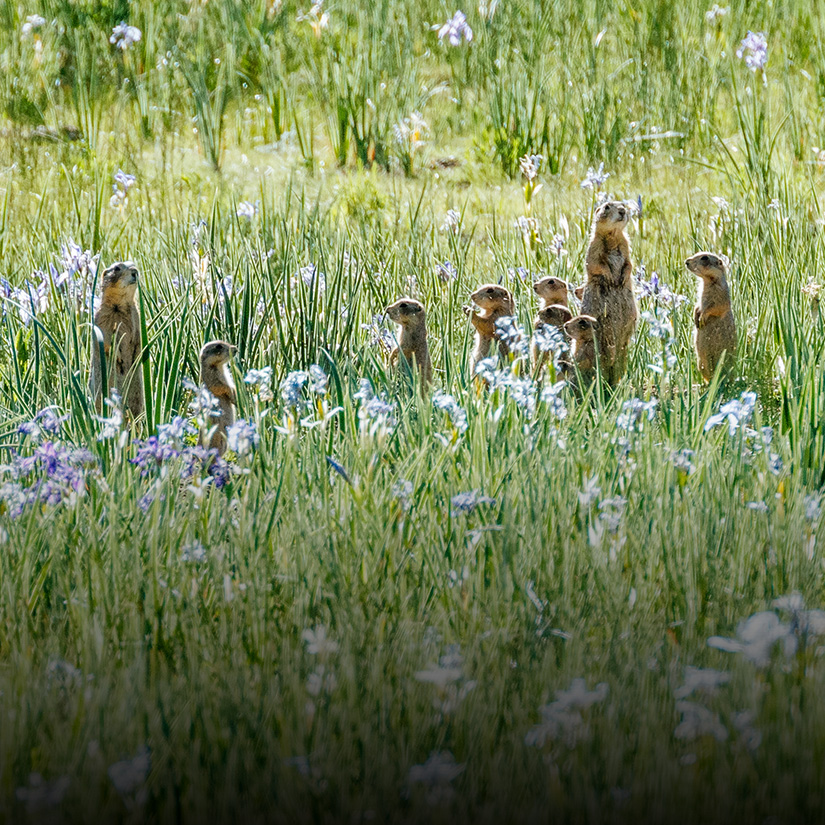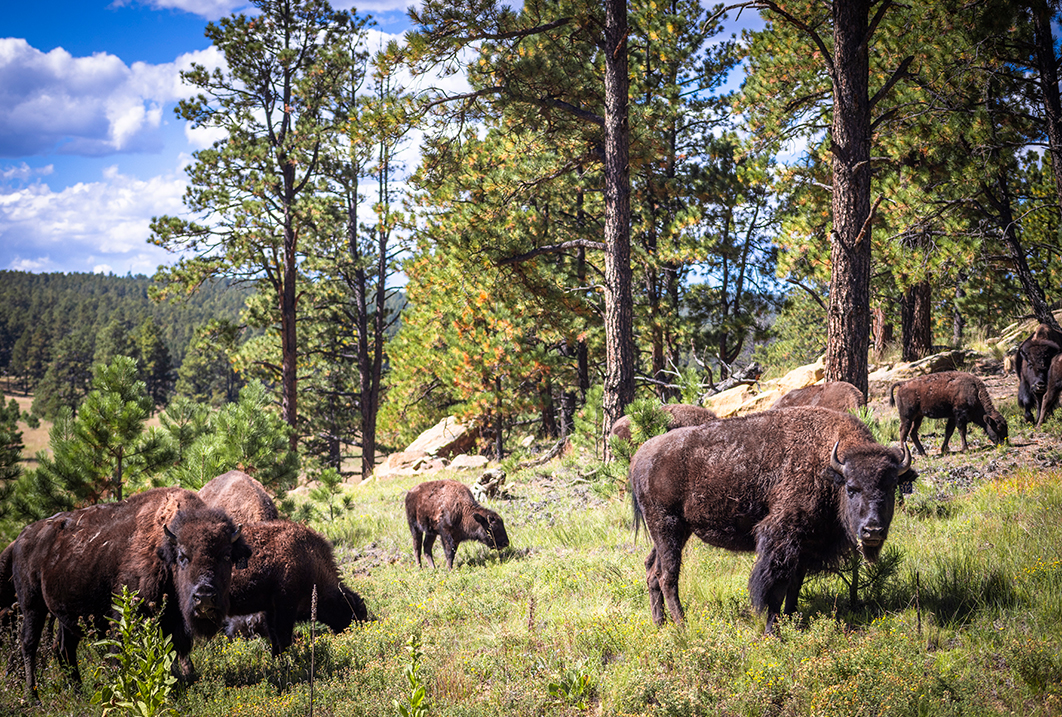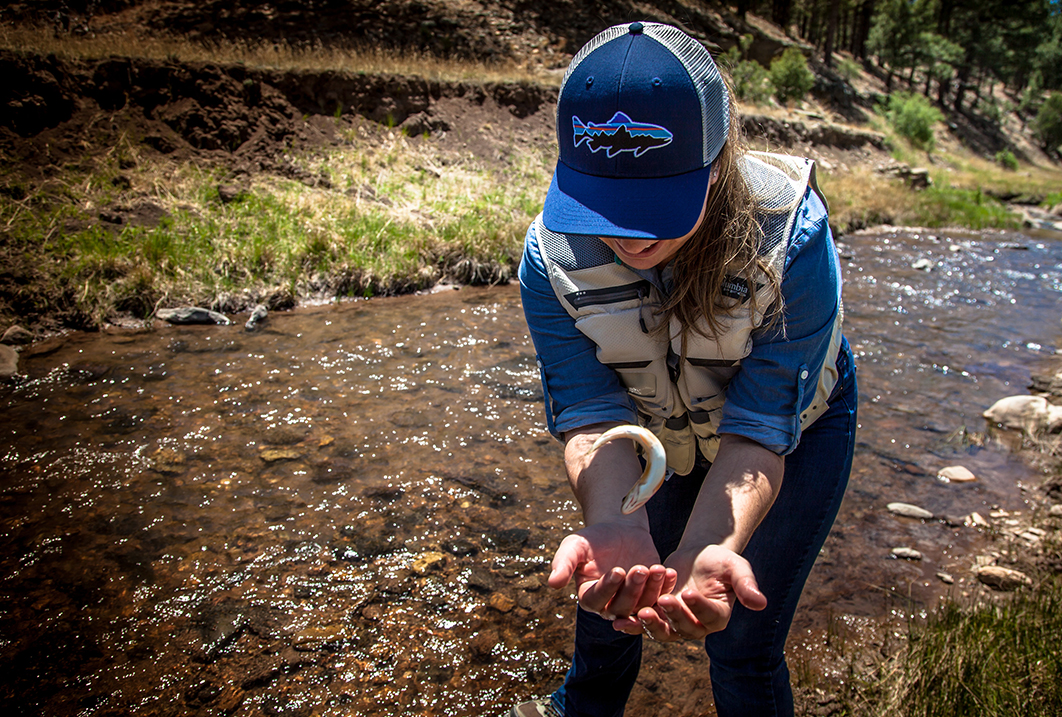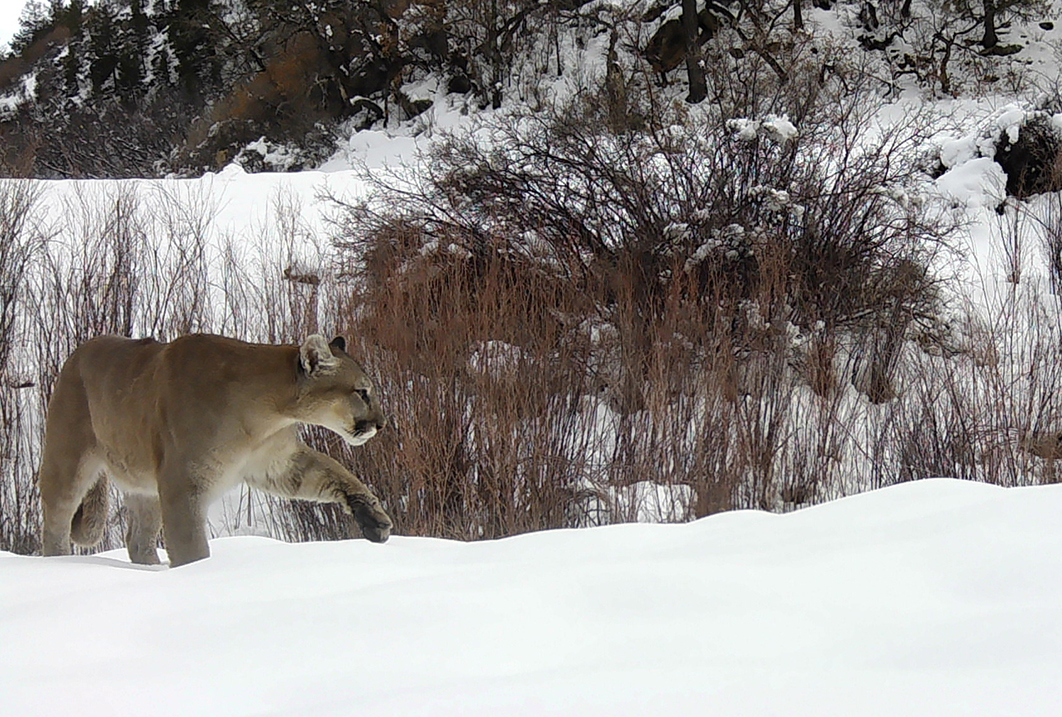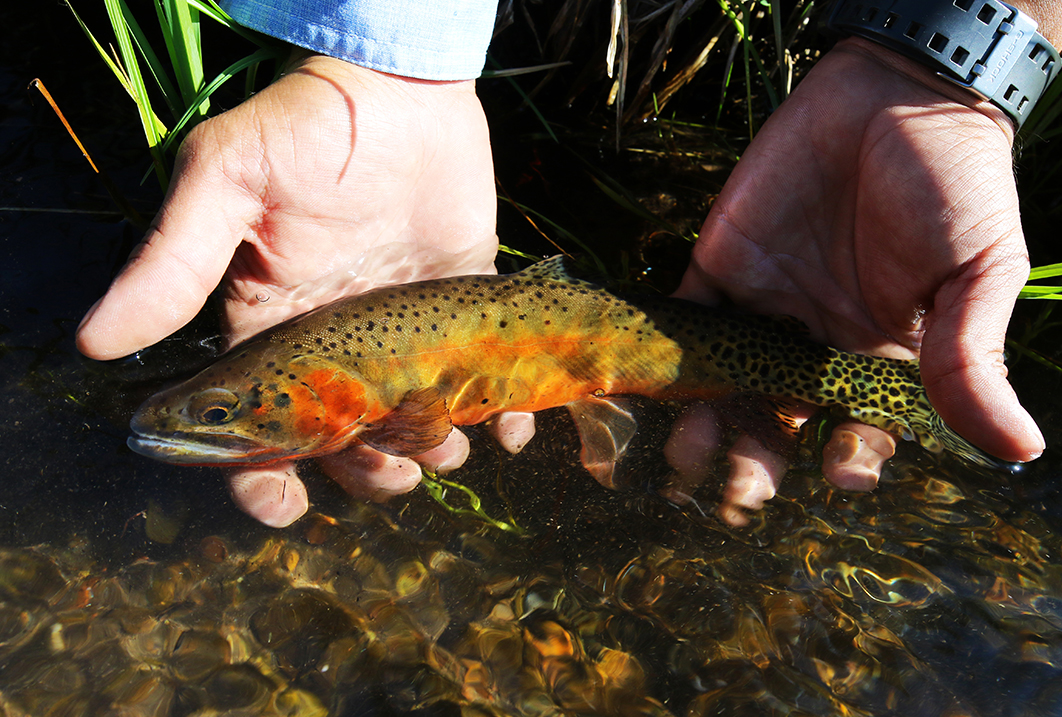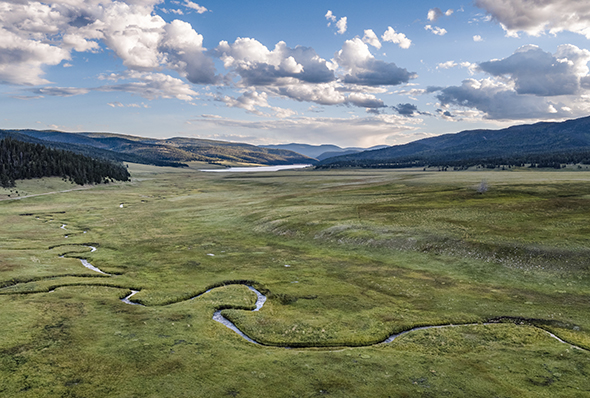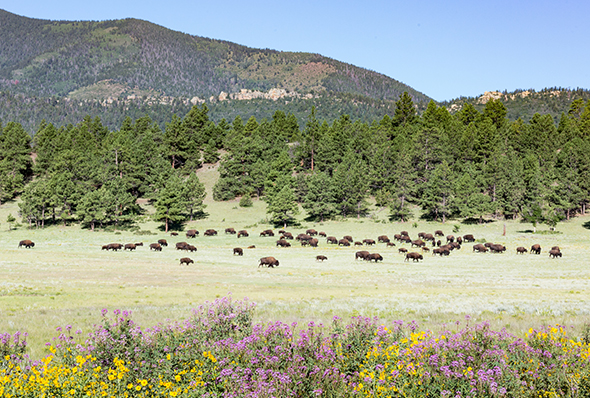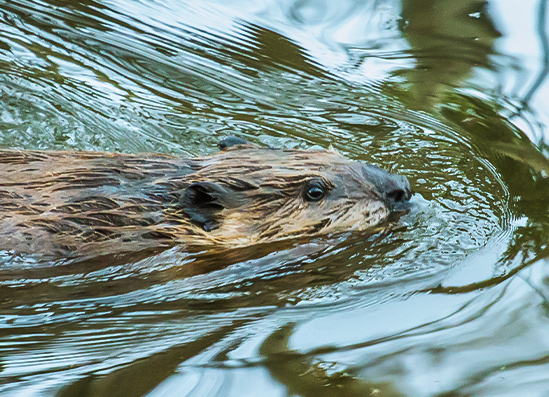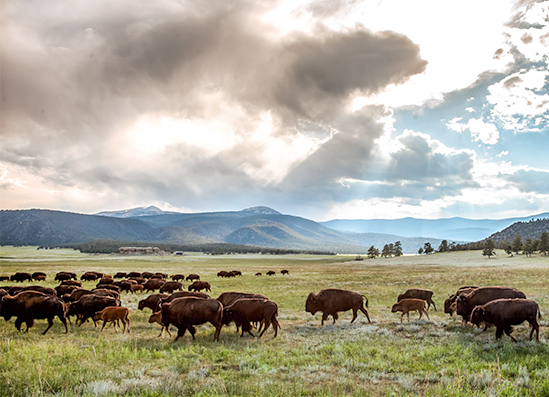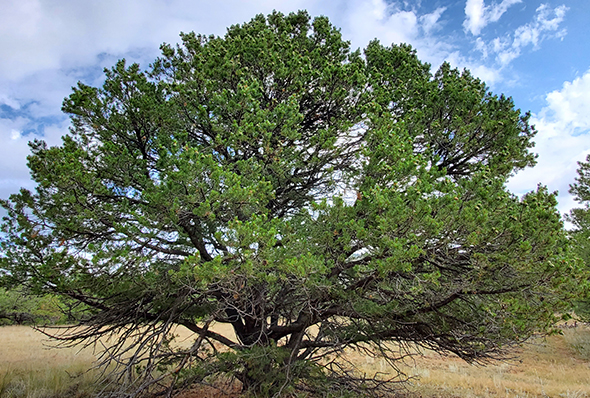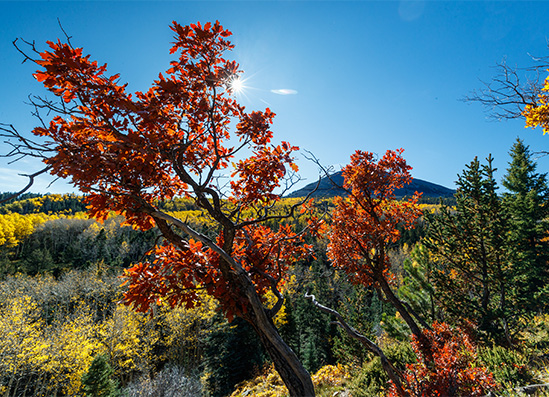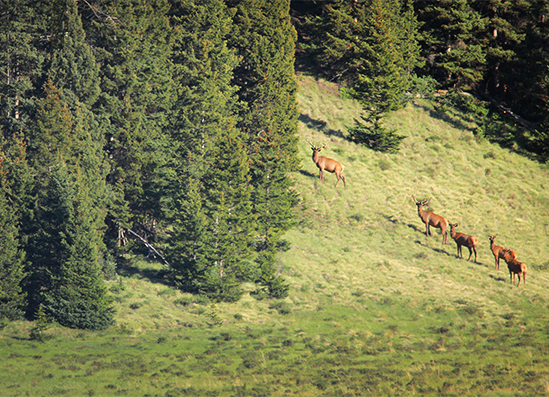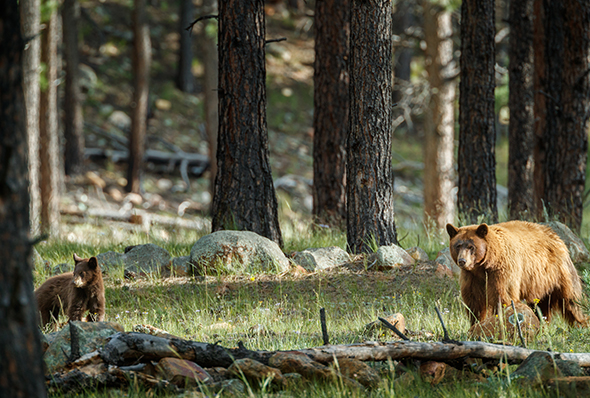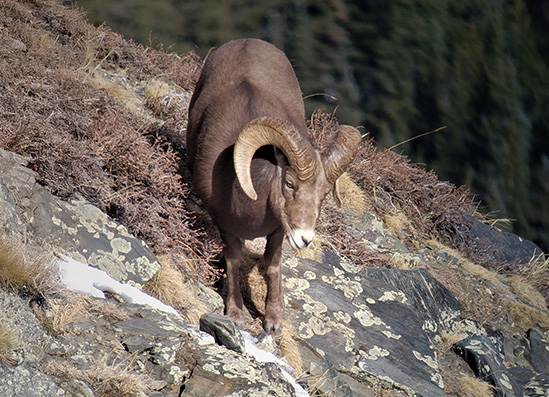

Large Landscape Conservation
Experience Sustainable Stewardship at Vermejo
Explore Vermejo’s outdoor laboratory, where your visit fuels vital work by our scientists. Every step through this thriving wilderness supports our large landscape conservation efforts toward healthy ecosystems, flourishing native wildlife, and a self-sustaining legacy.
SPECIES RECOVERY
Castle Rock Bison
Vermejo’s Castle Rock bison herd holds unique genetics with genes from three foundation herds and testing has shown the Castle Rock bison are free of bovine mitochondrial DNA. Vermejo’s bison team uses low-stress livestock handling to encourage herd migration across the landscape.
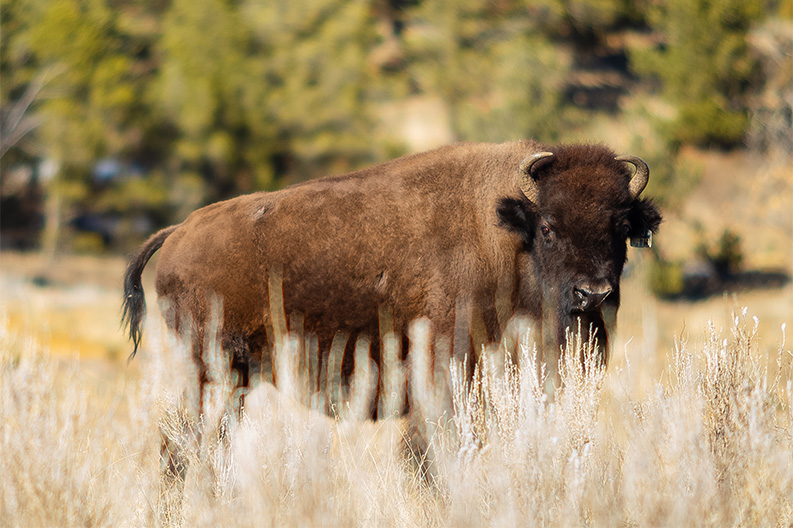
RIO GRANDE CUTTHROAT TROUT – VERMEJO WATERSHED
A different species of aboriginal Rio Grande cutthroat trout (RGCT) lives in the upper Vermejo River. Currently, the watershed is also populated by non-native brook trout. Vermejo is working to protect the genetically unique RGCT population and to limit the migration of other non-native fish into the reaches. Research is ongoing to determine effective methods to reduce the reproduction of the brook trout in the system.

Rio Grande Sucker and Rio Grande Chub
Though historically part of the Costilla watershed, Rio Grande sucker and chub are currently absent, possibly due to predation by non-native trout. Vermejo and our research institute are exploring the restoration of these species here, alongside conservation efforts at the Ladder property in southern New Mexico.

Small Mammals
Vermejo’s grasslands harbor Gunnison’s and black-tailed prairie dogs, though black-footed ferrets are no longer found here. Restored riparian zones invite beavers, western jumping mice, and potentially the New Mexico jumping mouse. Bats, squirrels, and snowshoe hares also utilize various forest and wetland niches.
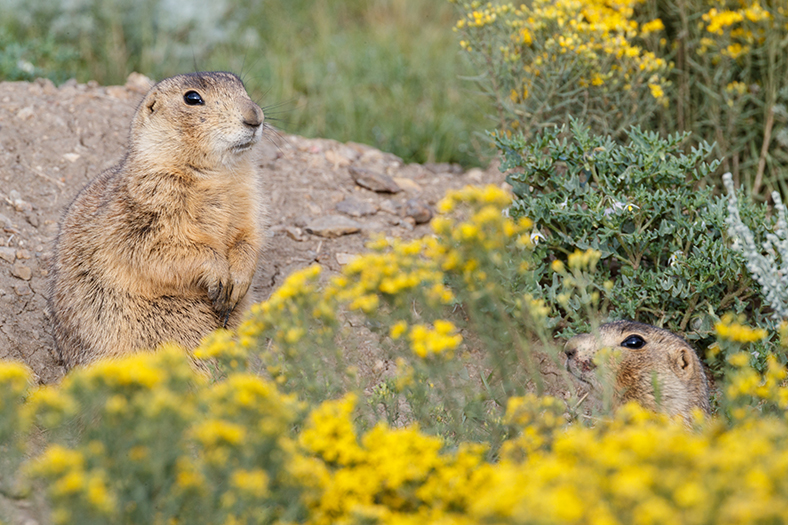
Large Ungulates
Along with the Castle Rock bison herd, Vermejo supports elk, mule deer, pronghorn, bighorn sheep, and white-tailed deer. Each species navigates a range of habitats—from shortgrass prairies to high alpine peaks—creating a dynamic balance within the land’s ecosystems.
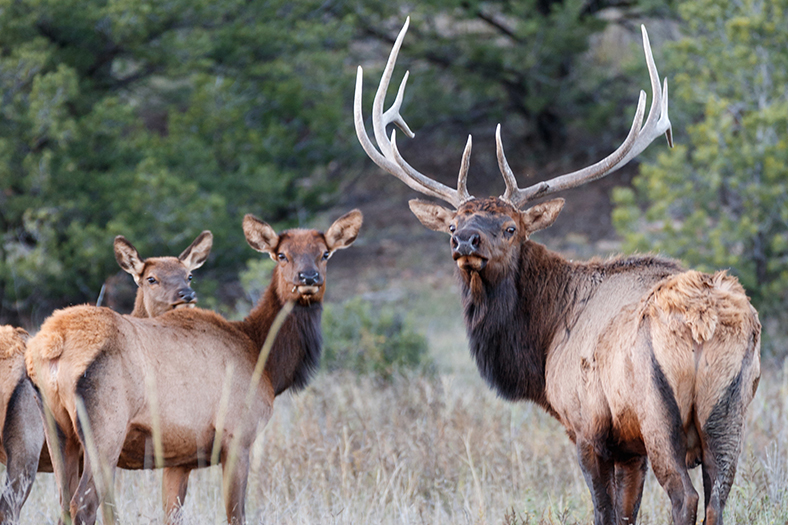
Predators
Integral to ecological balance, Vermejo’s predators include black bears, cougars, bobcats, coyotes, foxes, eagles, and owls. No known wolves currently reside here, and recent surveys did not detect swift foxes. Vermejo’s Natural Resources Division is involved with active black bear and cougar research projects.
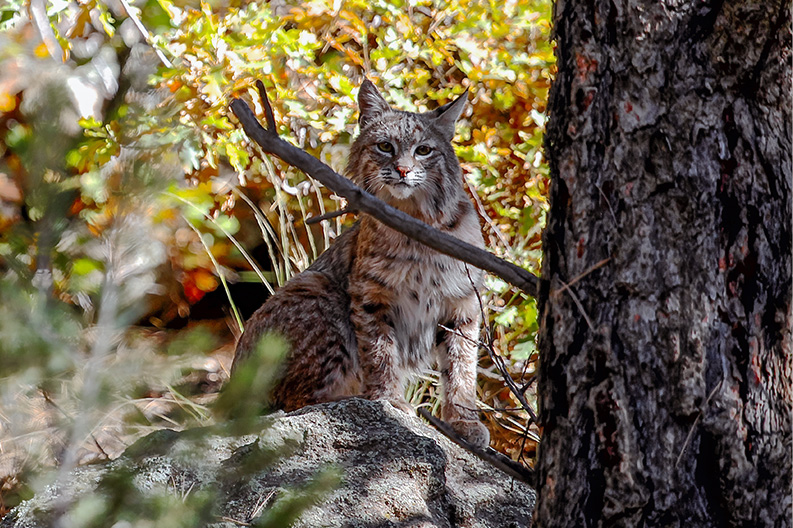
Birds
Situated along the Central Flyway, Vermejo features a dramatic elevation range that supports numerous bird species—from burrowing owls on the prairie to ptarmigan high in the alpine tundra. Migratory cranes and waterfowl pass through, while various owls, raptors, and turkeys roam throughout.
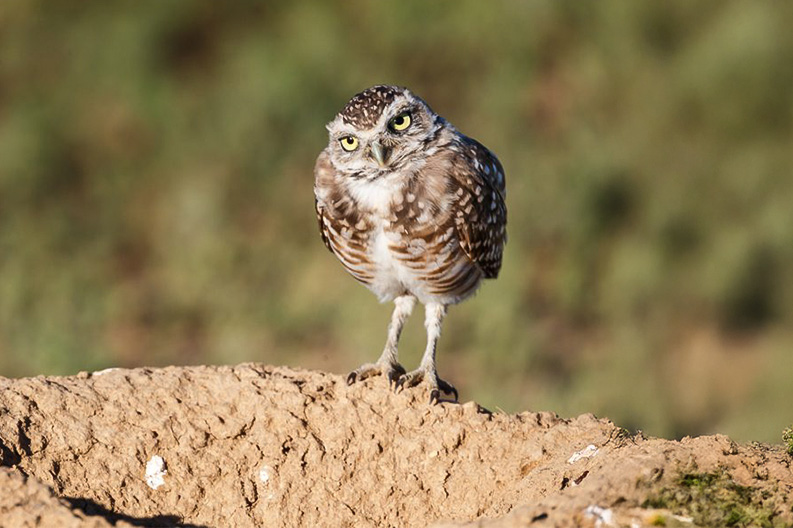
Amphibians
Restoring wetlands and riparian zones benefits amphibians like northern leopard frogs, tiger salamanders, and chorus frogs. Early summer echoes with frog calls in the ponderosa forest. Returning beavers create wetland habitats that may help combat declines caused by fungi and other threats.
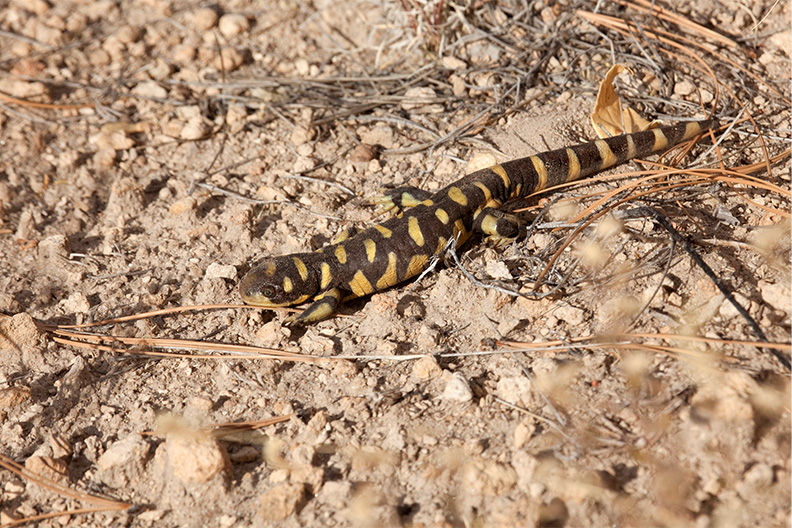
Reptiles
Mid- to lower-elevation areas host snakes and lizards, including prairie rattlesnakes, gopher snakes, and western fence lizards. The mountain short-horned lizard—adapted to cooler piñon–juniper woodlands—gives live birth. These reptile predators keep smaller animal populations in check.
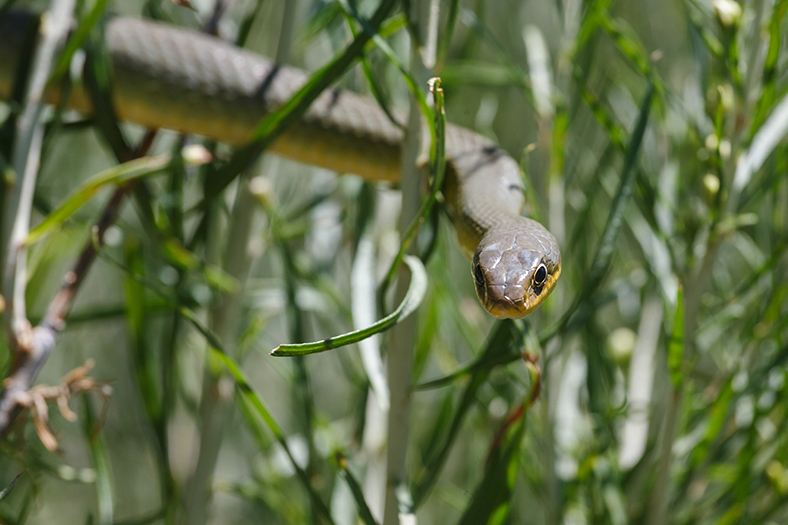
Insects and Spiders
Vital pollinators—bees, butterflies, moths—and decomposers flourish in Vermejo’s varied ecosystems. Glover’s silk moth uses willow and alder, while the yucca moth uniquely pollinates yucca plants. Predatory insects like orb-weaver spiders and damselflies keep populations balanced, contributing to healthy food webs.
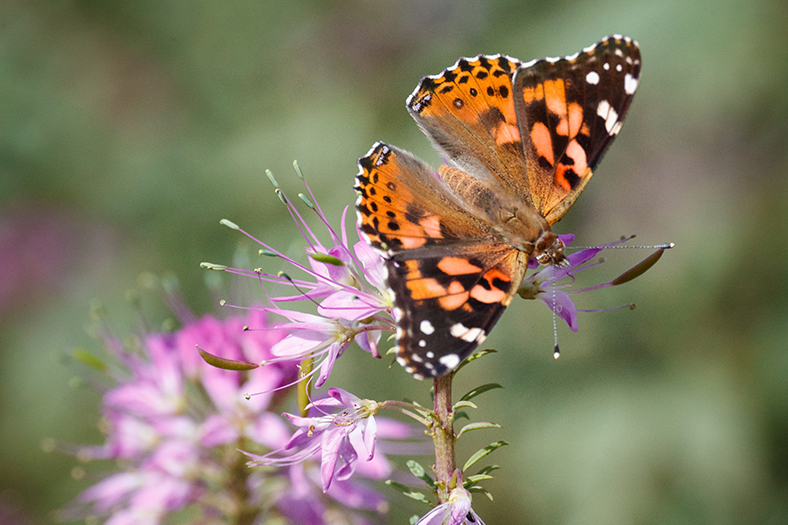
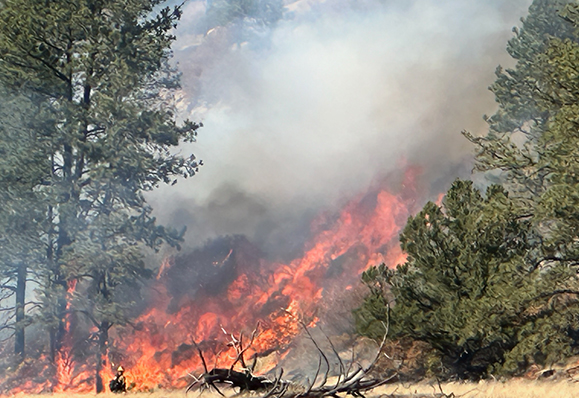
Wildland Fire
Natural lightning-caused wildfires are part of healthy Rocky Mountain forests. Fire suppression, however, left forests overgrown. Vermejo partners with Colfax County District 7 Volunteer Fire Department—mostly Vermejo employees—to respond. Long-term goals include “managed fire” under safe conditions to benefit forests and grasslands.
Read MoreWildland Fire
Wildland fire from lightning ignition is a natural component of the forests of the southern Rocky Mountains. For decades, fire suppression has resulted in overly dense forests and the accumulation of downfall. For wildland fire response, Vermejo partners with the Colfax County District 7 Volunteer Fire Department, which is comprised almost entirely of Vermejo employees. The long-term goal of the Vermejo Natural Resources Division and District 7 is to be able to conduct ‘managed fire’ response, where fires under the right conditions can be allowed to benefit the forests and grasslands of the landscape.
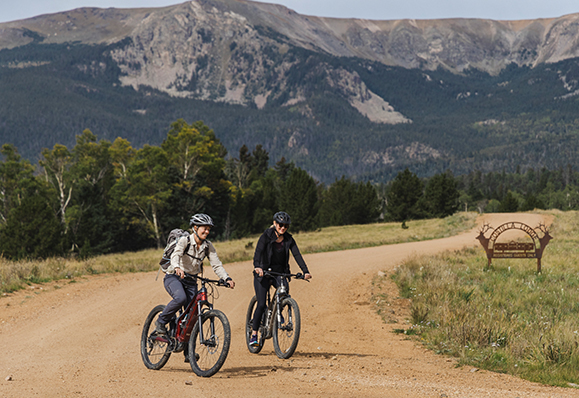
Road Management
Well-designed roads help redirect water back to the landscape, reducing erosion and retaining moisture for vegetation. Structures like rolling water bars slow water flow, trapping sediment and enabling the soil and plants to utilize the moisture effectively.
Read MoreRoad Management
Water is one of the most valuable resources of the West. Roads, if not well designed, can capture and channel water, creating erosion issues while removing the water from adjacent habitats. Vermejo works to improve road design to ‘harvest’ water caught on roads and return the water to the landscape. Structures such as rolling water bars can quickly return the water to nearby vegetation, slowing the flow, allowing the vegetation to catch sediment, and keeping the sediment from entering nearby streams. The water, once slowed, can be absorbed into the soil and then utilized by plants.
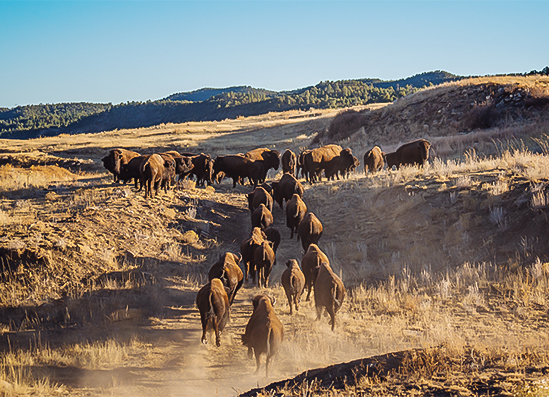
Fencing
Traditional fencing in the West hinders wildlife migration. Vermejo has removed most interior fences, allowing bison and other large mammals free movement. Where fencing is necessary—boundary lines and public roads—it’s being converted to “wildlife-friendly” designs that facilitate safe crossings.
Read MoreFencing
Traditional fencing in the western United States creates barriers to wildlife migration and movements within a landscape. To allow bison, elk, deer, pronghorn, and other large mammals to move freely across the property, Vermejo has worked to remove most interior fences. There are no pastures on Vermejo other than on the shortgrass prairie in the winter bison grazing areas. In places where fencing must remain, along boundaries and public roads, Vermejo staff is working to transition the existing fencing to wildlife-friendly fences to allow wildlife to easily and safely cross.
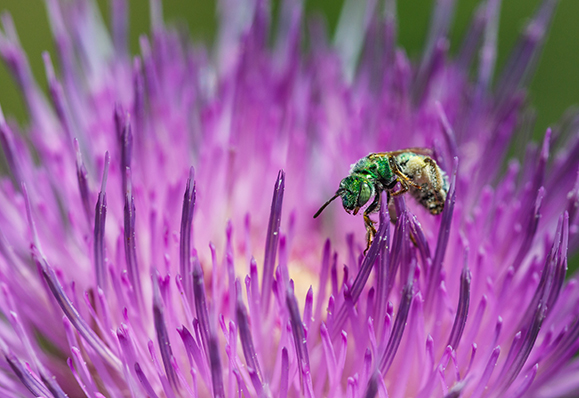
Invasive Plant Species
Since 2005, Vermejo has run a coordinated program to control salt cedar, Chinese elm, Russian olive, and various invasive thistles. Non-native plants disrupt native biodiversity and reduce habitat quality. Removing or reducing these species protects the broader ecosystem’s integrity.
Read MoreInvasive Plant Species
Vermejo began a coordinated invasive species control program in 2005. Non-native plants can outcompete native plants, reducing biodiversity. The loss of native plants impacts an entire ecosystem, as native animals are not adapted to utilize the non-native plants. The primary objectives are to eliminate salt cedar, Chinese elm, and Russian olive from riparian areas; to control or eradicate (if possible) leafy spurge from the Ponil Creek riparian corridor; and to control invasive species such as Canada thistle, bull thistle, musk thistle, Scotch thistle, yellow toadflax, knapweeds, hoary cress, and other non-native plants.
